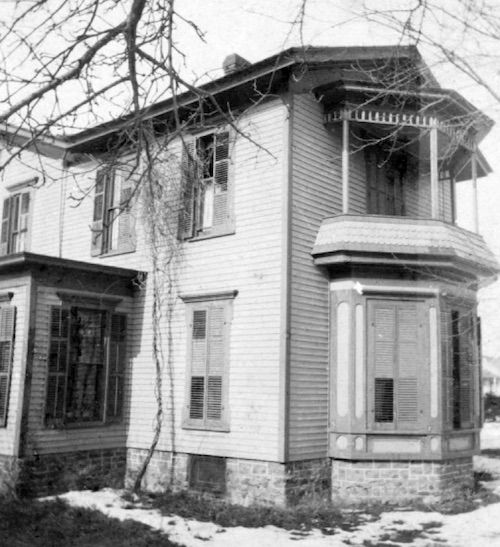Historic Childs: Natural History (Part 2)
Dr. Frank H. Lattin had extensive bird egg collection featured at World’s Fair, produced magazines on science – also served as assemblyman and local health officer
By Doug Farley, Cobblestone Museum Director – Vol. 2 No. 36
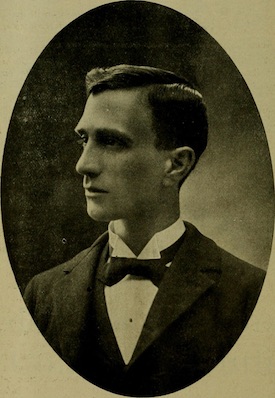
Frank Haak Lattin (1861-1937), age 26
GAINES – In Part 1 of this article, we explored a 19th century discovery in the Town of Gaines with roots back to the last Ice Age. In this article, we explore how this discovery had a dramatic influence on the life of one of the Town of Gaines leading citizens.
Frank H. Lattin was born in 1861, son of Joseph and Mary (Haak) Lattin of Gaines. Joseph died when Frank was only nine years old, but the setback was only temporary, as Frank went on to graduate from Albion High School, taught school for several years in Gaines, and then began an amazing career buying, selling and collecting natural history objects.
Even at the age of 36, Frank Lattin returned to school and worked his way through medical college and received his M.D. from the University of Buffalo in 1899, beginning a second career in medicine and surgery.
At an early age, Frank developed an interest in geology and natural history. He was especially fascinated by the discovery of “Gilbert’s Hearth” in Gaines in 1864, a prehistoric find that geologists and anthropologists dated to the Paleo-Indian era at the end of the last Ice Age.
His interest in the natural sciences started Frank on a lifelong obsession that led him to leave his mark not only on Gaines and Orleans County, but also all over the world.

“North American Birds Eggs,” 1905, by Frank H. Lattin, MD. Also shown is the birds egg collection of Cary Lattin which he created 1911-1914 at age 13, currently display at the Cobblestone Museum.
At first, Frank’s primary interest was in bird eggs and in 1884 he began the publication of a monthly magazine entitled the “Oologist,” which grew to a circulation of 3,000 copies. In 1894 he exhibited his collection of birds’ eggs at the Chicago World’s Fair and his display alone covered 2,000 square feet in the Anthropological Building.
Frank Lattin’s interests certainly included much more than just bird eggs. Following the World’s Fair, he purchased a world renowned collection of shells once owned by Col. Ezekiel Jewett, former curator of the NYS Museum at Albany. The collection embraced 50,000 separate specimens from over 10,000 species. The Catalog of the Collection made a book of 200 pages.
On February 15, 1895 Lattin began producing a weekly publication entitled, “Natural Science News.” Popularity spread quickly and the publisher needed to employ four workers to meet the demand. Eventually, Mr. Lattin’s many collections within the natural sciences grew to encompass two large warehouses of specimens.
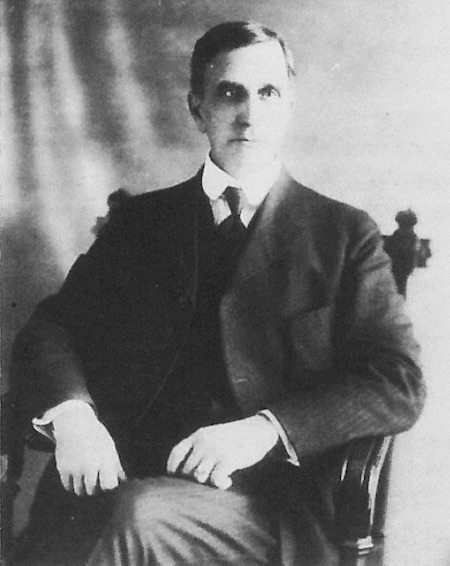
Dr. Frank H. Lattin, 1917
Dr. Frank Lattin’s reputation was equally as strong locally as it was with scientists worldwide. One Gaines resident, Earl Harding, recalled his admiration and appreciation for this small town medical legend.
“Yes, in those days, doctors made house calls. The doctor that delivered me was Dr. Frank Lattin of Gaines. I almost used to try and get ill so my Mother would call him up, because Frank Lattin was very famous as a collector of birds’ eggs. I used to do some of that myself, so if I could get Dr. Frank Lattin up here and talk about birds’ eggs, I’d like it! At that time, there was quite a migration of our people to Wayne County to buy fruit farms, and Frank Lattin was interested in that project, too. He had a farm in Wayne County as I remember.”
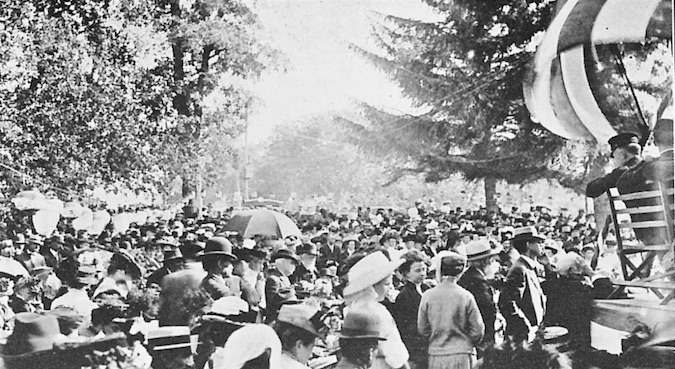
Town of Gaines Centennial, 1909
Mr. Lattin wore many hats indeed during his lifetime. He promoted local history and was a moving force in the Town of Gaines Centennial celebration in 1909. On January 5, 1909 he addressed the Eleventh Annual Convention of New York State Fruit Growers Association held in Convention Hall in Rochester. His topic was “My Experience in Reclaiming Old Apple Orchards.”
From 1917 to 1930 he served in the NYS Legislature as Assemblyman from Orleans County. He contributed to the advancement of public health in the State by endorsing and defending new health measures as the Chairman of the Assembly Committee on Public Health.
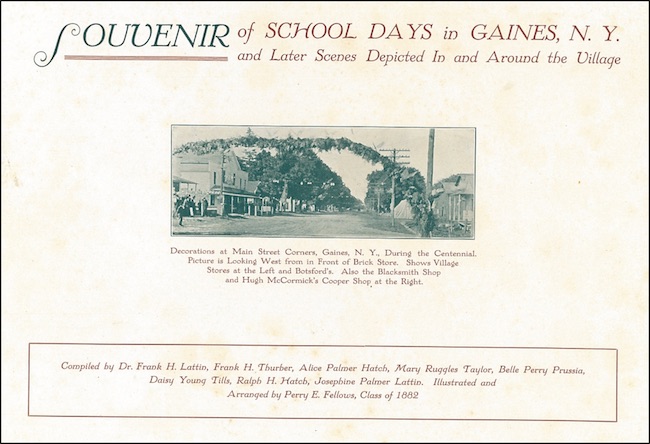
In the 1920s, Dr. Lattin was busy organizing the Old Schoolmates Reunion for the District #4 Cobblestone School in Gaines.
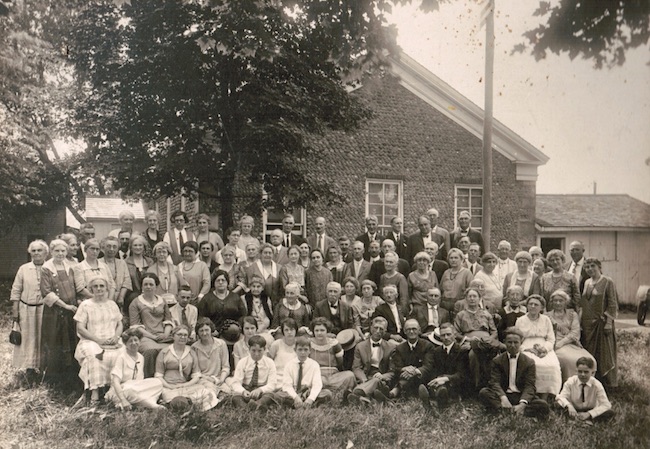
District #4 First Reunion, 1924
In addition to his historical research, Frank Lattin produced extensive genealogical information on the Lattin family. He served as health officer for the Town of Gaines until his death in 1937.
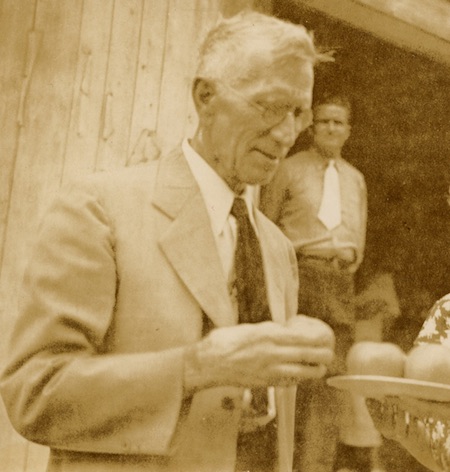
Photo courtesy Town of Gaines Historian
One of Dr. Frank Lattin’s favorite activities was judging fruit exhibits at state and county fairs, as seen in this photo from the 1930s.
The Lattin home in the Village of Gaines, shown above, was a great source of community pride over the years. Dr. Lattin himself reflected that it is probably the only home in the world that was secured through the consummation of a single sale of bird eggs.
Frank Lattin married May Bullard in 1885 when she was 19 years old. They had two daughters, Dorothy Root and Virginia Lattin Morrison who later resided in the family homestead on the southwest corner of NYS Routes 104 and 279.
Perhaps, an editorial in the “Orleans Republican” newspaper from 1937 provides the best summary of Dr. Lattin’s character:
“Everything pertaining to natural history attracted him and he gained a broad knowledge by keen observation of everything about him. Step by step he broadened and progressed, not by magic, but by his own unswerving integrity and steadfastness. Honorable, possessed of a keen sense of humor, he radiated cheer wherever he might be. His success meant no man’s downfall, hence all loved him and regarded him as a friend. His life touched many others at home and in foreign countries in a business way that culminated in friendship. He was like the sturdy mountain oak whose roots ever deepen into the rich soil until it stands firm and solid against each blast.”




















